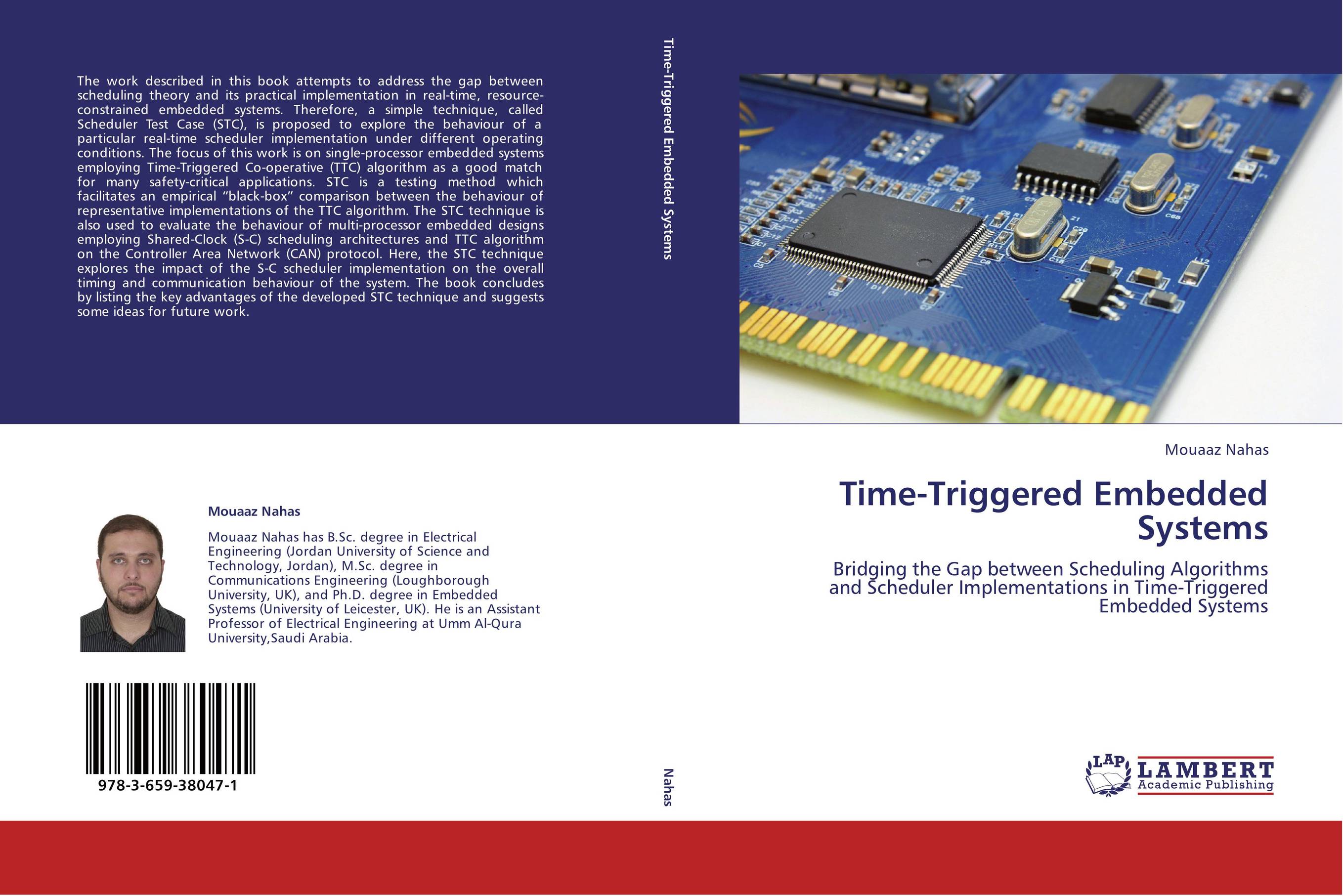| Поиск по каталогу |
|
(строгое соответствие)
|
- Профессиональная
- Научно-популярная
- Художественная
- Публицистика
- Детская
- Искусство
- Хобби, семья, дом
- Спорт
- Путеводители
- Блокноты, тетради, открытки
Time-Triggered Embedded Systems. Bridging the Gap between Scheduling Algorithms and Scheduler Implementations in Time-Triggered Embedded Systems

В наличии
| Местонахождение: Алматы | Состояние экземпляра: новый |

Бумажная
версия
версия
Автор: Mouaaz Nahas
ISBN: 9783659380471
Год издания: 2013
Формат книги: 60×90/16 (145×215 мм)
Количество страниц: 580
Издательство: LAP LAMBERT Academic Publishing
Цена: 77799 тг
Положить в корзину
Позиции в рубрикаторе
Отрасли экономики:Код товара: 121442
| Способы доставки в город Алматы * комплектация (срок до отгрузки) не более 2 рабочих дней |
| Самовывоз из города Алматы (пункты самовывоза партнёра CDEK) |
| Курьерская доставка CDEK из города Москва |
| Доставка Почтой России из города Москва |
Аннотация: The work described in this book attempts to address the gap between scheduling theory and its practical implementation in real-time, resource-constrained embedded systems. Therefore, a simple technique, called Scheduler Test Case (STC), is proposed to explore the behaviour of a particular real-time scheduler implementation under different operating conditions. The focus of this work is on single-processor embedded systems employing Time-Triggered Co-operative (TTC) algorithm as a good match for many safety-critical applications. STC is a testing method which facilitates an empirical “black-box” comparison between the behaviour of representative implementations of the TTC algorithm. The STC technique is also used to evaluate the behaviour of multi-processor embedded designs employing Shared-Clock (S-C) scheduling architectures and TTC algorithm on the Controller Area Network (CAN) protocol. Here, the STC technique explores the impact of the S-C scheduler implementation on the overall timing and communication behaviour of the system. The book concludes by listing the key advantages of the developed STC technique and suggests some ideas for future work.
Ключевые слова: Embedded Systems, real-time, Scheduling algorithm, Predictability, Jitter, Scheduler, Time-Triggered, Scheduler Implementation, Test Cases, Shared-Clock



